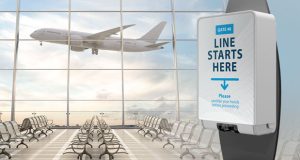Toilets leave a lasting impression, reveals a new survey and report on the UK public’s attitudes towards washrooms in hospitality establishments.
Formica Group commissioned the report to better understand what makes a bathroom good or bad, asking 2,000 respondents for their most common toilet bugbears and their best and worst experiences. The report also includes top tips for designing the perfect washroom.
Overall, the British public is underwhelmed with toilets in places serving food and drink, with only five per cent considered ‘spotless’. Trains top the list of washrooms people are reluctant to use, followed by nightclubs and motorway services.
The biggest issues identified were hygiene and bad smells, with poor maintenance being another major complaint. Over a quarter of respondents admitted to checking the toilets before deciding where to drink or eat, demonstrating the kind of impact getting this space right can have on small businesses.
The survey identifies a clear link between the quality of public washrooms and the perceived quality of the establishment overall. Two thirds of respondents agree that the cleanliness of a bathroom reflects the quality of the food served.
The design and aesthetic of a bathroom also leaves its stamp on us all, and can affect a bathroom user’s perception of comfort, whether consciously or subconsciously. Two out of five people surveyed affirmed that style and décor impacted whether they were comfortable using the facilities.
While word of mouth and Food Standards Agency hygiene rating are factors in choosing a place to dine, social media and online reviews are also increasingly influential.
As part of the survey, people were also asked what they really want to see in a bathroom. The most popular features were those improving hygiene, as exemplified by the ‘hands-free’ toilet experience preferred by two thirds of respondents. Even so, excessive frills such as Japanese style wash and dry technology were considered unnecessary. Instead, there’s a high demand for basic privacy, with soundproofing considered to be ‘somewhat important’ by 42 per cent.
Unisex toilets are yet to gain popularity. A mere five per cent don’t mind them, and around half of respondents, male and female, prefer gender-specific loos. Women in particular see the washroom as a space where you should be able to feel at ease and largely believe any toilet apart from their own to be of questionable hygiene.
Read the full report here.





